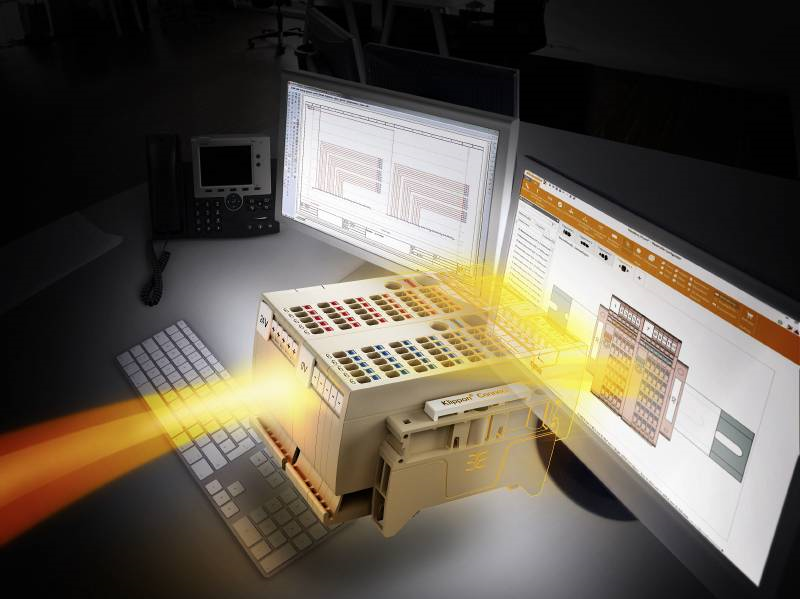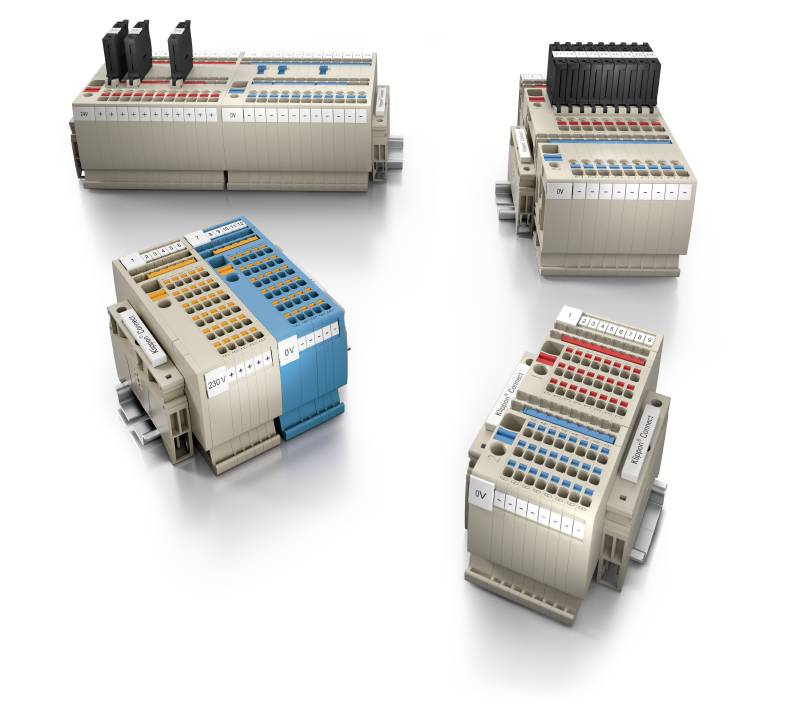 As automation systems and control panels become more complex, the challenges associated with designing and implementing effective and convenient control voltage distribution systems increase dramatically. However, recent developments in terminal technology and design software provide the answer, says Peter Croucher of Weidmüller.
As automation systems and control panels become more complex, the challenges associated with designing and implementing effective and convenient control voltage distribution systems increase dramatically. However, recent developments in terminal technology and design software provide the answer, says Peter Croucher of Weidmüller.
A control voltage distribution (CVD) system needs to be compact because of pressure to either install more equipment or minimise the size of control panels, yet connections must be fast and easy to make, clearly identifiable and readily accessible to facilitate testing and fault finding.
A straightforward, three-step approach, makes things much easier. The first step is to decide on the type of terminal products to be used as the basis for the CVD system. The second requirement is to design the system, and the third is to assemble it.
Unlike conventional feed through terminals, Klippon® Connect AAP modular potential distribution terminals are purpose-designed for CVD applications. They provide large space savings compared with conventional feed-through terminals, without sacrificing accessibility or versatility, and they have the additional advantage of using innovative push-in technology for connections.
This means there are no screws to loosen and tighten and no spring clamps to release, resulting in potential savings in wiring time of 50% or more.
Weidmüller offers AAP potential distribution terminals in two versions: grouped and alternating. With grouped terminals, there are two feed-in terminals, one each for the positive potential and negative potential. With alternating terminals, the positive and negative potentials are located on one terminal. Both types of terminals are complemented by a wide selection of push in cross-connections, and a comprehensive range of markers.
Sometimes, there’s an extra level of complexity – the need to provide overload and/or short-circuit protection for the outgoing supplies from the CVD system. The traditional solution is to add electronic load monitoring modules, mounted separately from the terminals, and connect these to each circuit requiring protection.
However, extra space is needed in the control panel to accommodate the additional modules and wiring time is increased by the need to connect these to the terminals.
 Weidmüller’s maxGUARD solution,, offers terminals with integrated electronic protection. Products in this range cut space requirements in the control panel by up to 50% compared with using separate terminals and load monitoring modules, and dramatically reduce wiring time.
Weidmüller’s maxGUARD solution,, offers terminals with integrated electronic protection. Products in this range cut space requirements in the control panel by up to 50% compared with using separate terminals and load monitoring modules, and dramatically reduce wiring time.
maxGUARD terminals offer benefits that include pre-trip indication, easily accessible test points and a built-in isolation function to facilitate testing. Also, like their AAP counterparts, maxGUARD terminals use timesaving push-in connection technology.
But what about designing the CVD system? It’s one thing to choose the product range, but quite another to work out the optimum terminal arrangement for a particular project and to order all of the components needed to make up the assembly. This is where the Weidmüller Configurator comes in.
Intuitive in operation, this software supports structured selection and configuration of terminal systems, and provides 3D views that make it easy for designers to be confident that the finished assembly will accurately meet their requirements. It also automatically generates full parts lists and, of course, it never forgets an end stop, endplate or other tiny but vital items.
The Weidmüller Configurator simply asks the user to specify the number of positive and negative supplies to be distributed, and to select the required marking schemes. The software then automatically generates a suggested solution showing all of the necessary components and accessories.
But what about the third and final step of building the CVD system? The components have been designed with ease of use and assembly in mind, but the configurator provides further benefits at the assembly stage by offering two options.
Either the finished drawings and parts lists for the CVD system can be printed out directly for use in the workshop, or they can be exported to an E-CAD system, such as EPLAN, for seamless integration with the full cabinet design. In both cases, the technicians assembling the CVD system receive detailed information that’s not only easy to understand and work with, but also guaranteed to be error-free.
For further information visit www.weidmuller.co.uk or call Weidmuller on 0845 094 2006.

